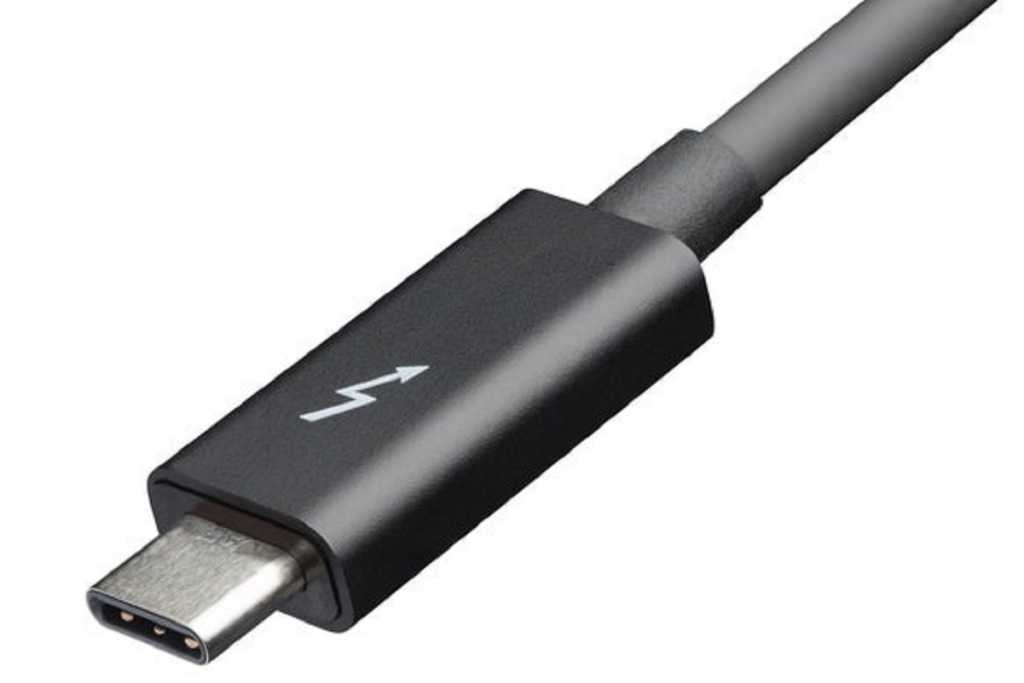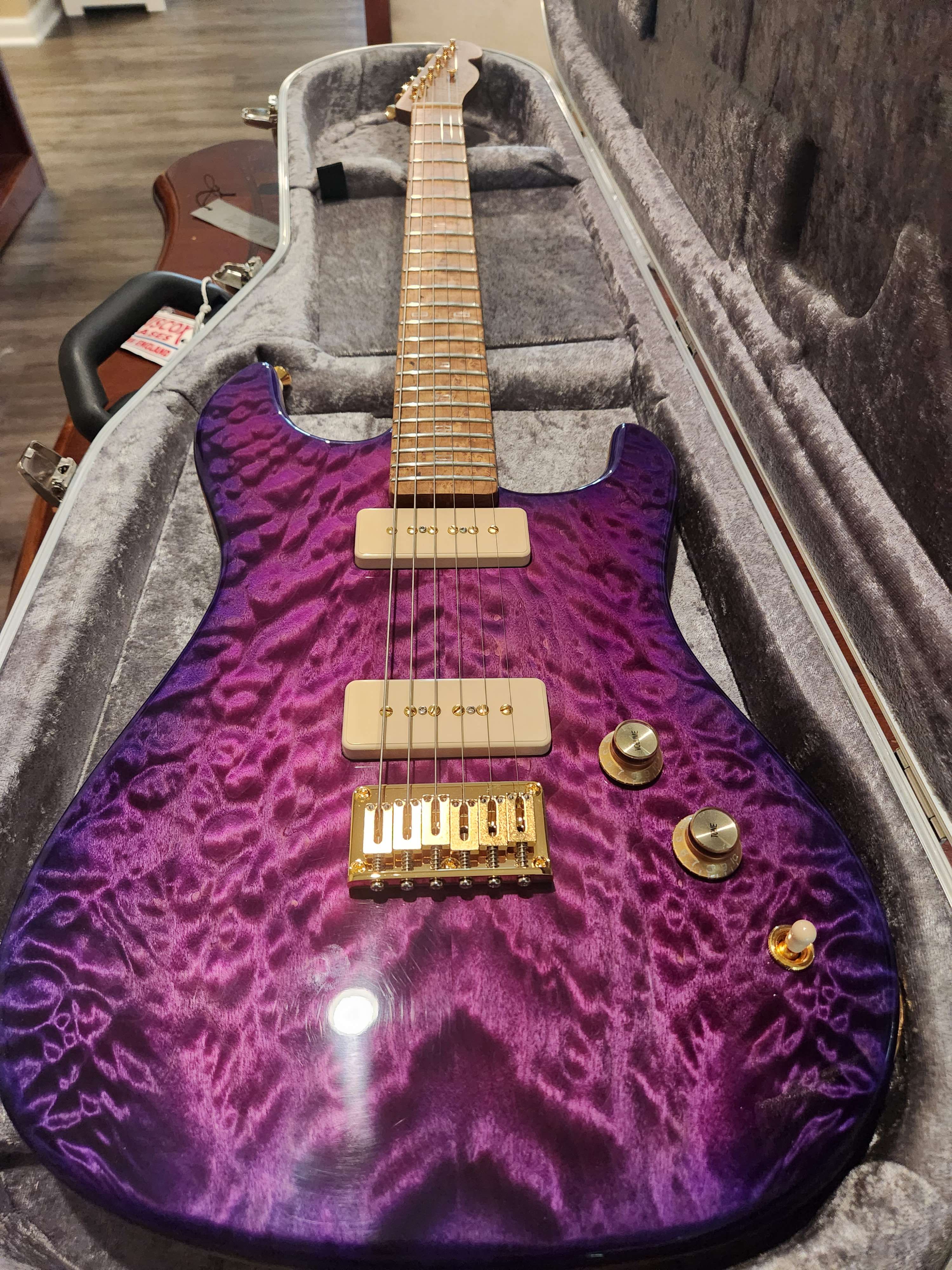Can someone please explain how this is possible? What advancements on the tech tree did we have to make to double the bandwidth which we couldn’t previously?
It’s the protocols more than anything.
stuff with this speeds existed already, it just wasn’t via USB. it was expensive proprietary protocols and hardware and cables. USB is an open standard design for consumer use, and not for giant corps with datacenters who can pay $2,000 for a single data cable.
Thunderbolt is basically a data-transfer focused version of USB, and just requires a different controller that supports the new protocols to achieve the higher speeds.
multiplexing is one way to achieve higher bandwidth and throughput over the same physical cable.
I heard about multiplexing in a radio frequency context, first time on digital… how would it work?
Same thing, the medium is just copper instead of air. That’s why they need a ton of shielding.
They use multiple signaling wires
From what I recall, the big change is in the signal encoding. It’s switching from PAM2 to 3, which will allow a lot more data to move down the line without having to totally rethink the cables and connectors. Although you will need new cables for this.
We made breakthroughs in recent yeara at harvesting alien technology from the crashed Roswell ships, leading to all of these “AI chips” and crazy speeds
USB 4 can already do 80 gbit, why are they even bothering with a competing standard anymore?
That’s USB4 v2.0, not USB4. It’s not the same thing.
Ugh…Find me one more naming standard on this entire fucking planet more screwed up than USB
Oh, let me introduce you to our lord and savior Microsoft!
Windows 1, Windows 2, Windows 3, Windows 95, Windows NT, Windows 98, Windows 2000, Windows ME, Windows XP, Windows Vista, Windows 7, 8, 9, 10, 11.
And then we have the magic that is Xbox:
Xbox, Xbox 360, Xbox One, Xbox One S, Xbox One X, Xbox Series S, Xbox Series X
Windows 9
Woah, that’s sounding a bit too logical, there.
Even better is that the Windows 11 version number isn’t 11, it’s 10.0.22000.
Oh shit, I forgot they actually skipped 9 :D
Reason was that old naming schemes from 95 and 98 messed up their shit.
Windows 95 was version 3.95 because returning 4.0 from the GetVersion api broke loads of software that was doing stupid checks.
People then started hardcoding checks for 3.95…
GetVersion has been deprecated completely now…
That’s cause 11 is mostly the same as 10 under the hood barr a few additions. But is mostly regarded as just a better front-end for 10
Less complete frontend
I would say that 10 is way more mish mashed together than 11s
God I hate the entire industry of marketing and sales and this is one of the reasons why.
Even worse is when Apple decides to just name everything the same thing and get rid of numbers entirely.
You’re also missing 8.1 if we’re going by Microsoft’s wish of calling a service pack a whole new version of Windows.
Kingdom Hearts.
The Fast and the Furious.
Windows
Wifi under the old standard?
Looking at Wikipedia, it seems like USB 4 has a 120Gbps asymmetric mode as well. That’s wild!
Can you connect PCI-E devices to USB 4? That feels like the only useful feature of Thunderbolt imo.
Yes. The full USB-4 spec has that.
That being said: thunderbolt is still great for verification. If it says thunderbolt you exactly know what it can do and that it should work as expected. USB-4 will be plastered on anything that can do only plain usb4 speeds.
Yep. It’s also compatible with most all Thunderbolt 4 functionality. https://arstechnica.com/gadgets/2022/09/breaking-down-how-usb4-goes-where-no-usb-standard-has-gone-before/3/#h3
Can we just switch to fiber interfaces already? TB5 apparently has a one-meter maximum passive cable length, compared to TB4’s already short two meters.
Thunderbolt optical cables exist if you need them, and for anyone who doesn’t the extra cost of the optical interface is a waste.
Are you implying that needing a cable more than 1m long is an edge case rather than the norm that should be covered by the standard?
Yes? Most use cases for Thunderbolt are external NVMe drives or laptop docks, those are fine with short cables.
The alternative of getting rid of USB-C plug compatibility and requiring an expensive optical assembly and fragile optical connectors would kill Thunderbolt. It means it’s gone from laptops where the space and cost is too high, it means it’s gone from iPads where it won’t even fit, external NVMe drives will settle for USB due to cost .
Active optical cables ARE part of the standard for those who need it.
Fair enough - that makes a lot of sense.
Need this cable at longer than 1m is an edge case. Longer lengths mean slower transfer speeds as copper has resistance which increases with length.
But then you would need fiber glass cables, put it in your bag/pockets by itself and you have to buy another one
You still need copper unless you don’t want to transmit power too.
Interestingly, fiber technically has more latency than copper - light moves slower through fiber than electrons through copper.
deleted by creator
Nice. I’m interested to see how eGPUs perform on TB5.
Does anything even use thunderbolt 4’s bandwidth? About the only thing I’ve seen is external GPUs and even that is a ludicrously niche use case.
I’d be much more excited about a post about something using TB4 to its fullest. All I can think reading this title is “who cares?” Is someone going to make a reasonably priced and even remotely convenient 40gbps ethernet card for TB5? No. Do my NVME drives go past 40gbps? Generally not, but I could’ve seen use for fast drives plugged into tb4/5 at least. Is anyone using TB4/5 for datacenter interconnects where this speed would actually be useful? I doubt it.
Does anyone reading this post use tb4 on a daily basis and feel limited in any way?
Storage and creative use cases, 100%. If you have several TBs coming off each camera per day, you will 100% feel the pain.
Just driving two 4K monitors at 40Gbps is pretty much all of the bandwidth of TB3, assuming you’re doing 10b 120hz.
A modern NVMe can easily do 50-60Gbps per drive.
Driving two 4k monitors at 10b120hz is pretty overkill to use thunderbolt for, is kind of my point. Is anyone actually being limited by that?
Even with cameras, the storage generally isn’t that fast. CFexpress cards cant generally break 2GB/s, and even 8+k cameras generally record to that or maybe USB-C (and if you’re recording to a USBC device you’re probably just gonna use USBC instead of thunderbolt).
NVMe that can do sustained write speeds like that will be full in a few minutes, unless you’re offloading to a massive high speed array over 10+gbit networking it just kind of seems like why bother?
Don’t get me wrong, I like the idea of going to faster interfaces for the sake of speed, but I have experienced almost zero real use of thunderbolt in real life, and I usually keep a pretty good eye out. My real question was mostly focused on whether there are people actually using thunderbolt and if they’re actually limited by 40gbps and I’m kinda just bitching at this point
Enterprise NVMe drives can do sustained writes of 7GB/s no problem. That’s 58Gbps plus overhead.
That’s to a single drive.
If you are a film crew connecting and ingesting multiple raw 8k 120hz video to be edited, this is very useful
As to whether they use USB4 v2 or thunderbolt, I’m not sure it matters. They look pretty similar, but with thunderbolt it’s very easy to know what the interface is capable of. Good luck when something says “USB 4”.
USB-C is just a connector - thunderbolt uses the exact same connector.
That’s fast.
Fast as a thunder bolt
Thunder is actually quite slow being limited by the speed of sound.
Why is Intel technology coming to Macs next year when Macs no longer use Intel chips? That makes no sense.
Intel and Apple co-developed ThunderBolt, and the tech is free to use for all manufacturers, so why wouldn’t they? One more selling point on the spec sheet is always good.
If it was free to use then AMD would support it too. I didn’t realize Apple was involved with it too, I thought it was Intel’s IP. Weird for them to work together on that and then Apple gives Intel the finger like they did.
If it was free to use then AMD would support it too
They do. There’s thunderbolt motherboards and it’s coming with USB-4 on the new 7000-series mobile chips.
I believe I read rumors that Intel wants to be a US manufacturer of Apple Silicon chips someday down the road. Sharing the role with TSMC.
Really, my question is why ThunderBolt isn’t more widely adopted?
My guess is the cost of Thunderbolt compatible hardware, which explains why only premium devices (ie Macs) have TB ports. TB cables are also much more expensive than the average USB-C.
That’s true. I didn’t consider the cost. Good point.
Apple’s part of the group backing AV1, along with Intel too. Huh.
Apple still uses intel chips in all their macs, just not for the CPU. The M1 Macbook for instances uses an Intel JHL8040R thunderbolt 4 chip.
Apple really done want to just adopt the global standards of USB, do they xD
Anything they can do to feel special and squeeze more money out of their customers, forcing them to remain in a proprietary ecosystem and buy more stuff that only works with Apple products, etc
Apple?














